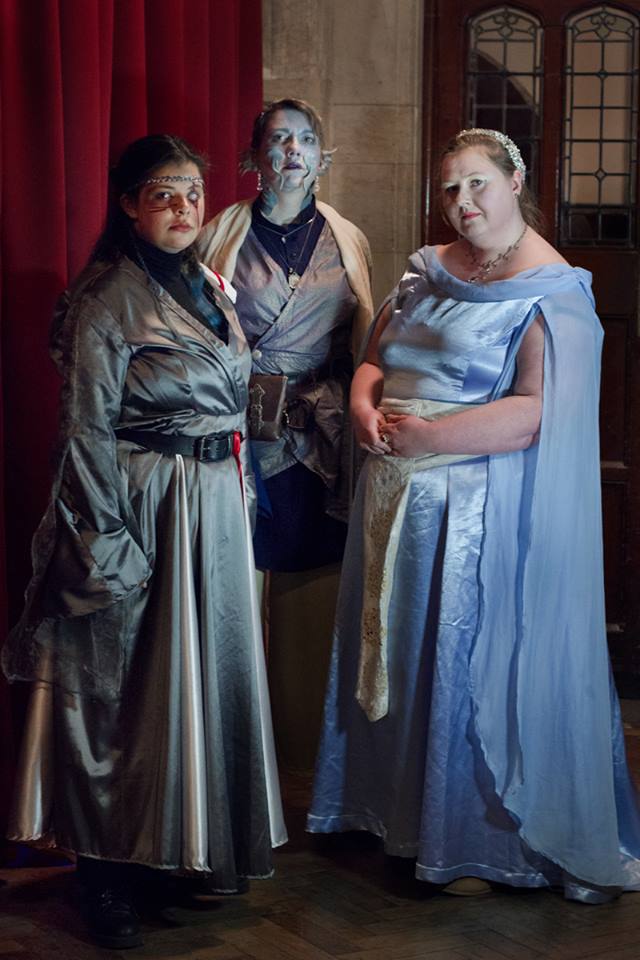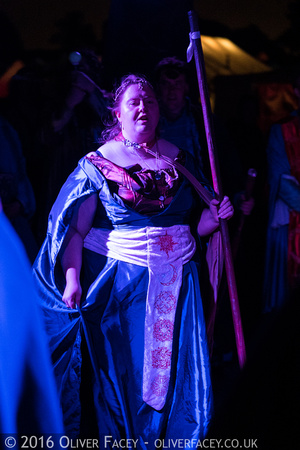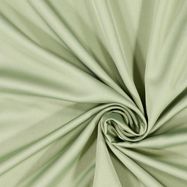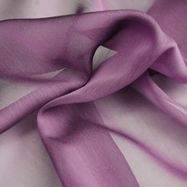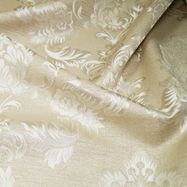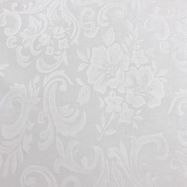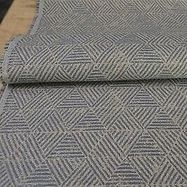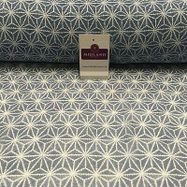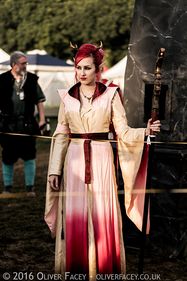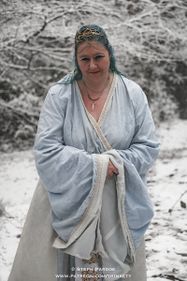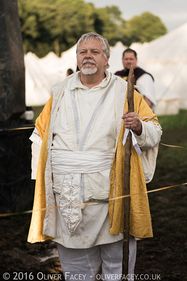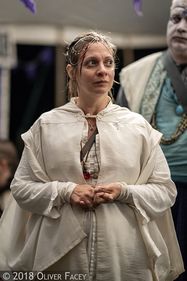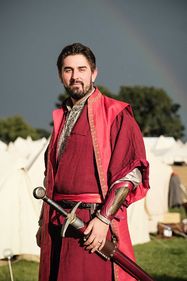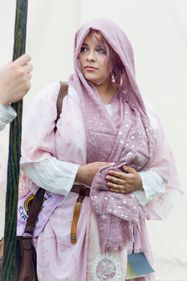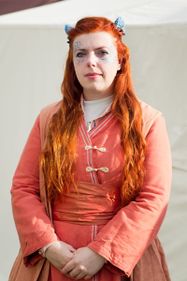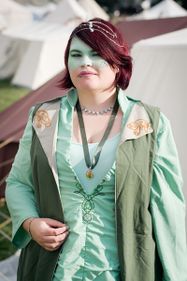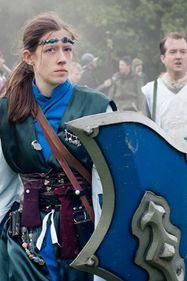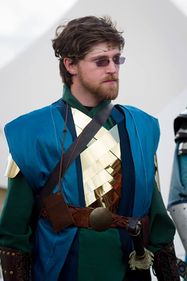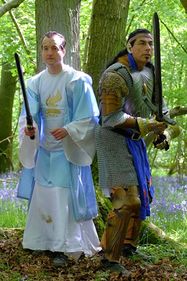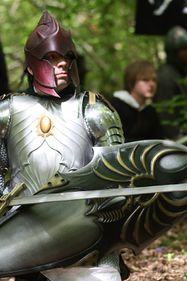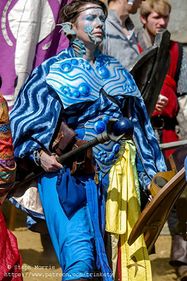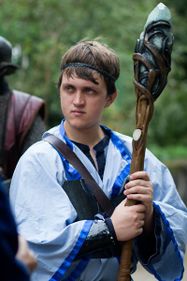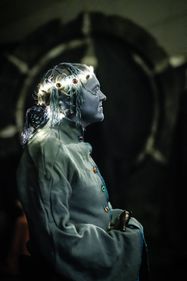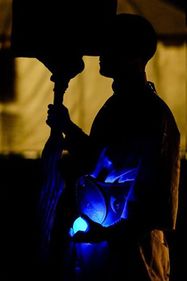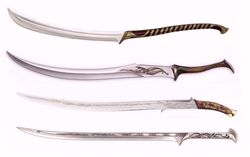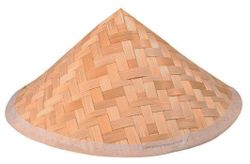Urizen look and feel
(Urizen Update 2021) |
|||
| Line 97: | Line 97: | ||
</fourpicture> | </fourpicture> | ||
== | ==Outside The Brief== | ||
To define the ideal look and feel for Urizen we have deliberately chosen to exclude some themes. This is important because it helps to create a clear visual aesthetic for the nation. The goal is to make members of the nation visually distinct from the other nations in play and to ensure that the costume guidelines don't become diluted by including ideas for costume from similar sources. We explicitly define some costume ideas and inspirations as not part of the brief for Urizen to make what definitely ''does'' fit the brief clearer and more distinct. | |||
Most things that are not part of a nation's brief are considered to be ''less appropriate'' as they are not not strictly part of the costume brief. This means that you can still use them if you need to but they are not something that you should actively aim for when you are creating or buying something for your Urizen character. Creating a costume is always a compromise as time and money are limited, so it is sensible to use a garment or prop that is ''less appropriate'' if you already own it, if that allows you to focus on improving other parts of your costume. | |||
A few things are explicitly defined as ''inappropriate''. These are things that you should not use when you are in-character at an event, because of the real-world connotations or imagery associated with them. We have deliberately omitted these elements because they are so striking and memorable that it is impossible to see them without thinking of the themes associated with them. | |||
===Less Appropriate=== | ===Less Appropriate=== | ||
The main inspiration for Urizen is the ideas and learning of Classical Greece, rather than [https://en.wikipedia.org/wiki/Eastern_philosophy Eastern philosophy]. As a result, Asian and East Asian clothing and costumes are not part of the brief for Urizen. Urizen is a nation of philosopher-mages and philosopher-warriors - not [https://en.wikipedia.org/wiki/Samurai Japanese samurai] or [https://en.wikipedia.org/wiki/Wu_(shaman) Chinese wu]. | |||
Layered robes are the basis for most Urizen costumes. A plain kimono or similar garment as part of your costume is fine, especially if it is one of the inner layers that you are wearing. The thing to avoid is creating an entire costume that looks unmistakably Asian or East Asian in origin - and garments like a full kimono or an obi should be avoided. | |||
<div style="float: left; width: 250px;"> | |||
{{CaptionedImage|file=Elven swords.jpg|width=250|caption=The elven swords in Lord of the Rings fit Urizen better than a katana or similar.}} | |||
</div> | |||
[https://en.wikipedia.org/wiki/Japanese_armour Japanese armour] made of scales laced together with silk is also best avoided, but if it is the only armour you have, then you can disguise it by wearing robes over the top. Iconic Asian and East Asian weapons like a [https://en.wikipedia.org/wiki/Katana katana] are also ''less appropriate''. If a katana is the only live roleplaying sword you own then it is ok to use one, but more traditional western weapons are better if you have access to them. | |||
If you want a weapon that captures some of the graceful style of East Asian weapons but has a more Urizen feel to it, then the curved blades used by the elves in the Lord of the Rings films are closer to the brief. Although these swords are probably inspired by real-world blades like shamshirs and tulwars - the decoration gives them a character that fits better with Urizen. | |||
The characters from Asian scripts such as [https://en.wikipedia.org/wiki/Kanji Kanji], don't have an in-character equivalent in the world of Empire, so as with [https://en.wikipedia.org/wiki/Runes Futhark] and [https://en.wikipedia.org/wiki/Ogham Ogham], costumes and props with them on are ''less appropriate'' than those without. | |||
===Inappropriate=== | ===Inappropriate=== | ||
{{CaptionedImage|file=Asian conical hat.jpg|width=250|align=right|caption=Please don't use an Asian conical hat as part of your costume.}} | |||
Asian conical hats are ''inappropriate'' in Empire. They are unmistakably associated with the Asian region and have often been used to present prejudicial depictions of people from the region. All live roleplaying games adopt costume and imagery from real-world sources, but we want to avoid using elements from other cultures in ways that are disrespectful. Because of this, these hats should not be worn at Empire. We recommend a hood or shawl for Urizen characters, or a hat like a petasos, but you could wear a [https://en.wikipedia.org/wiki/Pileus_(hat) pileus], or even a [https://en.wikipedia.org/wiki/Phrygian_cap Phrygian cap] if you want to create something specific. | |||
A [https://en.wikipedia.org/wiki/Kabuto Kabuto] is a helmet that is part of the traditional armour worn by the samurai class and their retainers in feudal Japan. The iconic version that is uniquely associated with that region has a very distinct crescent attached to the brow which is impossible to mistake for anything else. It is difficult to associate these helmets with anything other than Shogunate Japan so they should not be used at Empire. Likewise, outfits that are iconically tied to historial conflicts from the Asian region like [https://en.wikipedia.org/wiki/Shinsengumi Shinsengumi] are also ''inappropriate''. | |||
[https://en.wikipedia.org/wiki/Huabiao Huabiao] are the traditional ceremonial columns found in Chinese architecture. Their distinctive profile and prominent placement make them emblematic of Chinese culture and they are often found outside tombs. Because of the important religious significance of huabiao, they are ''inappropriate'' as camp dressing and props that are decorated in a similar style are ''less appropriate''. Iconic Asian animal iconography like [https://en.wikipedia.org/wiki/Chinese_guardian_lions Chinese guardian lions] are ''inappropriate''. Western versions of related iconography like dragons and phoenixes are ideal. | |||
<!-- | |||
<table> | |||
<tr><th>Appropriate</th><th>Less Appropriate</th><th>Inappropriate</th></tr> | |||
<tr><td>Indistinguishable layered robes, Chiton sleeves, Scalloped sleeves</td> | |||
<td>kimono/yukata with rectangular sleeves [the rectangular sleeves in this style specifically]</td> | |||
<td>Shinsengumi</td></tr> | |||
<tr><td>Bathrobes, greek stuff</td> | |||
<td>Obvious cosplay</td> | |||
<td>WHOLESALE Real life cultural wear</td></tr> | |||
<tr><td>Mixing of layers from different places</td><td></td><td>Corset, Obi [safety reasons]</td></tr> | |||
<tr><td>The term “East Asian”</td><td></td><td>The word “oriental”</td></tr><tr><td>Boaters / Bergere Canotier</td><td></td><td>Rice hats, Dalai Lama style monk’s hat,mongolian headdress</td></tr> | |||
<tr><td>Tone-on-tone jacquards etc</td><td></td><td>Chinese style brocade fabrics</td></tr> | |||
<tr><td>Constructed iconography that reflects the in-game religious elements, icons, or runes</td><td></td> | |||
<td>Real world religious iconography (needs examples from someone who knows about East Asian religion) tibetan/buddhism/shinto</td></tr> | |||
<tr><td>Layered robes and armour</td><td></td><td>Obviously Samurai armor, Shogun helmet</td></tr> | |||
<tr><td>In game runes/symbols</td><td></td><td>Katana/ swords with asian characters</td></tr> | |||
<tr><td>Constellations/net of heavens</td><td></td><td>Ornate IRL religious weapons</td></tr> | |||
</table> | |||
<table> | |||
<tr><th>Problem</th><th>Reason</th></tr> | |||
<tr><td>Larp items heavily including religious iconography/ heavily imitates religious items. | |||
This includes items which are culturally specific awards or items dedicated to the dead.</td><td>There are many items that can only be earned and worn by people of certain races [eg: native american feathered headdress] | |||
There are also many religions where items such as ceremonial pillars, statues and totems are to be treated with respect and not worn by someone who is not dedicated to them, awarded them or dead having been a follower of that religion in their lives.</td></tr> | |||
<tr><td>Larp items when layered or grouped together, that do not invoke a sense of fantasy nation but instead just flatly read as a real world culture/religion.</td> | |||
<td>This does not aid with the suspension of disbelief. In fact it is hard for many to ignore. | |||
In the same manner one would not have a neon modern tent in the IC area. | |||
This is not simply for players of minority race/ cultures themselves, but also aids people who are not of those cultures/religions to learn how to be respectful towards them and in turn learn more about them.</td></tr> | |||
<tr><td>Larp items on their own that are intrinsically of a real world culture. | |||
[eg: a buddha’s head, geisha painting, items of worship, ]</td> | |||
<td>Unlike multiculturalism in the real world. Larp is a fantasy game and make-belief. Trying to show one’s acceptance of another culture should not be in such a setting.</td></tr> | |||
<tr><td>Larp items or actions that evoke racism/ racist iconography or negative religious stereotyping | |||
[Rice paddy hats - chinese, | |||
Songs about having sex through a cloth - orthodox Jews]</td> | |||
<td>Trying to create a feeling of ‘otherness’ is understandable in a Larp. | |||
However one should not rely on how minorities or religious people have been presented offensively, past or present.</td></tr> | |||
</table> | |||
--> | |||
==Useful Links== | ==Useful Links== | ||
Revision as of 13:53, 7 September 2021
Overview
Elegant, graceful, serene, refined, poised, focused, subtle
The Urizen look draws heavily on classic fantasy images of high elves and scholastic wizards. Robes are common, and most folk wear several layers to protect against the cooler environment of their mountain homes. The nation emphasizes control and poise, and citizens of Urizen try to project a calm, serene exterior. Urizen citizens prize beautiful garments, made from the finest materials available, but they eschew the more flamboyant approach of the League and the Brass Coast, preferring clothing that is exquisitely made rather than ostentatiously adorned.
Most outfits employ light or pastel colours with layered garments in similar shades. Contrasting or complementary colours are reserved for highlights or decoration. Some spires keep the Urizen style of layered shades of similar hue but adopt a rich, dark shade like a midnight blue or wine red for the base colour.
Decoration is popular on clothing, weapons, implements and armour but tends to be stylised or even abstract, seeking to express the essence of something rather than reproduce it. Complex embroidery of looping spirals, or representations of the stars and constellations are particularly popular. These are usually in metallic shades or subtle shades designed to complement the whole outfit.
Garments and Accessories
Layered Robes: The iconic look of Urizen is long robes in layers, with the outer robes typically cut to show off the lower layers underneath. This can be achieved by having an open front or leaving the hems progressively shorter on the outer layers, to create a graduated effect. Often the outer layer of robes will have short, split, or voluminous sleeves (or even be sleeveless!) in order to show off closer fitting long sleeves underneath. Lower layers are often fastened close to the body with a belt or sash, allowing the outermost robe to hang loose. Outer layers are often cut to swirl elegantly to emphasise poise.
While the archetypal Urizen robes are floor length, the "Anvil cut" of mid-calf length is popular for Urizen attending summits, since the fields of Anvil are often wet and muddy. Cloaks are sometimes worn for warmth, usually coloured to match the wearer's robes. Heavier or waterproof materials are popular at Anvil.
Sash: Wide belts and sashes are used both to fasten robes and to add detail to outfits. An ideal sash can be narrow like a belt or wide enough to hold a design, but is not so wide that it starts to look like a bodice or be stiffened like an obi.
Spire or Stargazers belt: Some Urizen hang a long vertical decorative pennant, often heavily embroidered, from the centre of their sash or belt. Each pennant is unique but it is usually referred to as a spire belt if decorated with symbols representing a person's spire or a stargazers belt if decorated with stars or constellations.
Trousers: When worn, trousers are either tight like leggings, or loose and flowing to look as if they were another underlayer of robes.
Hood or Hat: A hood is a common way to cover the head in Urizen. They are usually part of a robe; a heavy outer robe with a hood is the ideal way to protect against the cold and the rain. You can also use a wide, flat-brimmed hat like a traditional petasos. These are usually made of felt, but can be other materials and can have additional fabric draped from the brim to tie the hat on or provide additional shade or decoration.
Shawl or Scarf: Some Urizen wear a shawl or scarf designed to be pulled up on to the head to shelter it from the elements. It is usually draped over the shoulders when not in use rather than wrapped round the neck. Shawls and scarves are often decorated with designs intended invoke the Net of the Heavens
Jewellery: Silver and gold jewellery is common, usually worn around the neck, brow or hair. The ideal pieces are long interlocking chains suggestive of a net. Jeweled circlets representing the power of the will or the mind are also common.
Colours and Materials
Base Colours: Most individual garments use a single colour, either white, a light shade (such as pale green or pastel yellow), or a rich dark shade (like burgundy or ink blue). Urizeni weavers have mastered the art of using iridescent gloaming to create ombré effects in the most desirable and expensive fabrics.
Shades: The ideal outfit is composed of pieces belonging to the same colour or colour family, for example four shades of blue ranging from sky through to midnight or two purples paired with two pinks. The emphasis is on elegance and simplicity in colour choice, rather than the brash contrasts of nations such as Dawn, Highguard, or the Brass Coast.
Lustrous Fabrics: Materials in Urizen are usually plain rather than patterned, aiming to show off the fineness of the cloth itself and any decoration on it. Fabrics are often shiny - satins and silks are popular - with cotton sateen providing a good compromise between sheen and durability. Shot fabrics such as shot silk and shot dupion are favoured for the iridescent effect they create.
Damask: Damask, patterned silk, and jacquard are also popular but always using one colour throughout, so that the pattern subtly catches the light, rather than being bold ornamentation.
Patterned Weaves: Although less common than plain materials, fabrics with a subtle pattern using pale colours are used, especially those with a regular geometric pattern.
Practical Materials: The high mountains of Urizen are cold and finely woven wool of any weight is worn whenever warm costume is needed. Thicker cottons and linen under armour are also common when preparing for battle.
Gallery
Battle
The ideal Urizen armaments are inspired by the aesthetics of the Noldor in Lord of the Rings and High Elves warriors in Warhammer Fantasy. Helms tend to cover the head, with curving sections to protect the face and cheeks while shields and armour are shaped and curved in stylised ways to appear more elegant. Armour may be banded or segmented to emphasise flexibility and ease of movement, while Urizen weapons emphasize grace and speed rather than weight and power.
Armour: A breastplate that is fluted or decorated with subtle filigree and curved vambraces and greaves to match is the ideal for an Urizen dressing for battle. The armour made of overlapping bands worn by Elrond in Lord of the Rings is also ideal. Mail is an excellent way to cover gaps in the armour, but can also be worn alone, especially if sandwiched between layers of robes.
Helm: A barbute with either an open or closed face is ideal for Urizen with its distinctive sweeping curves and strengthening ridge. You could also use a traditional hoplite's helm although the heavy plume is better replaced with something more elegant if you can manage it.
Shield: Urizen shields should have stylized shapes and be curved to remain close to the body in use. The historical Pelte but made of metal is a good starting point. Kite shields, heater shields or round shields are all fine, but the more stylised the shape, the better.
Weapons: Swords are favoured in place of axes or maces - the ideal weapons are light and designed for swift graceful movements. The blades used by the elves in the various Lord of the Rings films with their slightly curved blades and intricate decoration are perfect for Urizen. Pole-arms such as spears or glaives are favoured over longer or heavier equivalents like pikes or halberds. Bows are preferable to crossbows, because of the emphasis on graceful movements.
Religion
Urizen priests draw heavily on the hearth magic of Essence to demonstrate their calling and most will adopt a symbol that denotes their approach to the Way. Sashes and stoles are often embroidered or decorated with stylised symbols of the Way. Jewellery incorporating symbols of the Way are employed in nets worn on the head, short-chained pendants, or broaches worn on the chest, to bring the symbol close to the head, the voice, or the heart respectively. Urizen tradition associates each of the seven virtue with one colour, most commonly seen during their Spring festival of flowers, but some priests might use that colour as the dominant hue for their layered robes.
Astronomantic constellations are some of the most popular symbols in Urizen, but there is no simple relationship between the stars and the Virtues. As a result, Urizen pilgrims often adopt one or more constellations that are relevant to their specific approach to the Way and use them to decorate their robes. It is also common to see pilgrims carrying scrolls containing a soul net, either rolled up and tied to the belt or in a scroll case hanging from the belt.
Magic
More than any other nation, an Urizen should not feel they have to be a magician to make use of magical symbols as part of their costume. Magical symbols are often added to garments, using techniques such as embroidery or appliqué. Constellations are more popular than runes or totems and are often mapped out with sequins, gems, or beads made of coloured glass or precious stone.
Mage armour and implements are often decorated with precious stones, semi-precious stones, or crystals, or have magical symbols traced out with filigree. Rods, staffs, and wands are more likely to be made from metal than wood - most often mithril - and they are often surmounted with a carefully shaped piece of dark coloured crystal or stone.
Illumination is an important hearth magic in Urizen and implements, jewellery, and even robes sometimes have lightstones fused into them to create beautiful patterns of light. More than any other nation, the Urizen are likely to carry a light stone or a device with one or more light stones set into it. Urizen magicians often create ornamental light stones that emit light that scintillates or changes colour.
Outside The Brief
To define the ideal look and feel for Urizen we have deliberately chosen to exclude some themes. This is important because it helps to create a clear visual aesthetic for the nation. The goal is to make members of the nation visually distinct from the other nations in play and to ensure that the costume guidelines don't become diluted by including ideas for costume from similar sources. We explicitly define some costume ideas and inspirations as not part of the brief for Urizen to make what definitely does fit the brief clearer and more distinct.
Most things that are not part of a nation's brief are considered to be less appropriate as they are not not strictly part of the costume brief. This means that you can still use them if you need to but they are not something that you should actively aim for when you are creating or buying something for your Urizen character. Creating a costume is always a compromise as time and money are limited, so it is sensible to use a garment or prop that is less appropriate if you already own it, if that allows you to focus on improving other parts of your costume.
A few things are explicitly defined as inappropriate. These are things that you should not use when you are in-character at an event, because of the real-world connotations or imagery associated with them. We have deliberately omitted these elements because they are so striking and memorable that it is impossible to see them without thinking of the themes associated with them.
Less Appropriate
The main inspiration for Urizen is the ideas and learning of Classical Greece, rather than Eastern philosophy. As a result, Asian and East Asian clothing and costumes are not part of the brief for Urizen. Urizen is a nation of philosopher-mages and philosopher-warriors - not Japanese samurai or Chinese wu.
Layered robes are the basis for most Urizen costumes. A plain kimono or similar garment as part of your costume is fine, especially if it is one of the inner layers that you are wearing. The thing to avoid is creating an entire costume that looks unmistakably Asian or East Asian in origin - and garments like a full kimono or an obi should be avoided.
Japanese armour made of scales laced together with silk is also best avoided, but if it is the only armour you have, then you can disguise it by wearing robes over the top. Iconic Asian and East Asian weapons like a katana are also less appropriate. If a katana is the only live roleplaying sword you own then it is ok to use one, but more traditional western weapons are better if you have access to them.
If you want a weapon that captures some of the graceful style of East Asian weapons but has a more Urizen feel to it, then the curved blades used by the elves in the Lord of the Rings films are closer to the brief. Although these swords are probably inspired by real-world blades like shamshirs and tulwars - the decoration gives them a character that fits better with Urizen.
The characters from Asian scripts such as Kanji, don't have an in-character equivalent in the world of Empire, so as with Futhark and Ogham, costumes and props with them on are less appropriate than those without.
Inappropriate
Asian conical hats are inappropriate in Empire. They are unmistakably associated with the Asian region and have often been used to present prejudicial depictions of people from the region. All live roleplaying games adopt costume and imagery from real-world sources, but we want to avoid using elements from other cultures in ways that are disrespectful. Because of this, these hats should not be worn at Empire. We recommend a hood or shawl for Urizen characters, or a hat like a petasos, but you could wear a pileus, or even a Phrygian cap if you want to create something specific.
A Kabuto is a helmet that is part of the traditional armour worn by the samurai class and their retainers in feudal Japan. The iconic version that is uniquely associated with that region has a very distinct crescent attached to the brow which is impossible to mistake for anything else. It is difficult to associate these helmets with anything other than Shogunate Japan so they should not be used at Empire. Likewise, outfits that are iconically tied to historial conflicts from the Asian region like Shinsengumi are also inappropriate.
Huabiao are the traditional ceremonial columns found in Chinese architecture. Their distinctive profile and prominent placement make them emblematic of Chinese culture and they are often found outside tombs. Because of the important religious significance of huabiao, they are inappropriate as camp dressing and props that are decorated in a similar style are less appropriate. Iconic Asian animal iconography like Chinese guardian lions are inappropriate. Western versions of related iconography like dragons and phoenixes are ideal.
Useful Links
Tutorials
A set of bullet point links to good tutorials on how to make a good costume, or how to make specific costume pieces.
- Urizen costume design talks about layering robes
Traders
A set of bullet point links to traders websites who produce iconic kit for that nation. We must exercise judgement here and also avoid including links for the sake of it. If we can't find a trader that sells iconic Urizen costume, then skip this section, don't link to a website of stuff that is "ok-ish".
Further Reading
Core Brief
Additional Information
